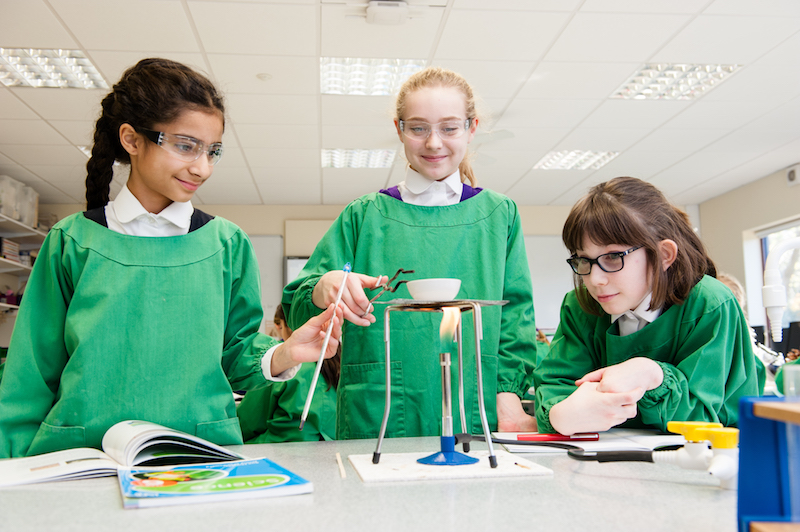Full STEAM ahead!
Posted on 27th Nov 2020 in School News, Which School?, STEAM

Jill Walker, Headmistress of Maltman’s Green School, explains the importance of an innovative approach to STEAM
Maltman’s Green has a rich history of preparing girls for the future and a strong reputation for being a school that is forward thinking. I believe that this approach will be more important than ever, with the Fourth Industrial Revolution already upon us! Characterized by a fusion of technologies that is blurring the lines between the physical, digital, and biological spheres, disruptive technologies and trends such as the Internet of Things (IoT), robotics, virtual reality (VR) and artificial intelligence (AI) are changing the way we live, work and communicate. Its impact is being felt in all disciplines, industries, and economies. At no time has this been more keenly felt than in the recent coronavirus crisis, with us all having to find new ways to work and connect.
It is against this rapidly changing and unpredictable backdrop, that the World Economic Forum Future of Jobs Report came up with the top 10 skills that are needed to drive success. Maltman’s Green School is nurturing the female leaders of the future. Our girls will be the movers and shakers of tomorrow. So, along with promoting academic excellence, developing our girls’ skills and aptitude in areas such as problems solving, critical thinking, people management, decision making, negotiation, flexibility, innovation, creativity and emotional intelligence, will all be more important than ever.
And this is where the STEAM curriculum (Science, Tech, Engineering, Art and Maths) comes in. Traditionally the arts and sciences have only been delivered in schools as separate subjects. But, increasingly the learning in school needs to reflect what is going on in the real-world - where scientists, engineers and mathematicians work collaboratively with designers and the creative industries, harnessing the power of technology to find innovative and novel solutions to problems. Children learn by doing. So, it is important for teachers to provide these active learning opportunities through a variety of approaches.
Examples might include the girls sharing and exploring their ideas with others (both off and on-line) as they work together on a group project such as designing a new musical instrument or a house made out of recycled materials with a built-in security system, or make connections between maths, art and science as they explore the symmetry of nature and create their own remote-controlled aeroplanes in a special curriculum themed week, be offered the freedom to go off-piste and explore their own ideas independently through a variety of media in termly ‘creative homework’, as well as the school developing extra-curricular activities to include a DT and engineering programme with access to a specially designed ‘Maker Space’.
Of course, in these unprecedented times, where home learning has been an integral part of what we offer our pupils, we have seen how important it is to provide an evolving, innovative learning environment with ubiquitous access to technology. I believe that digital technology can transform learning – bringing it to life, making it relevant and fun. From using green screens, class blogs, micro bits, floor robots, or a virtual learning environment, it is important to empower the girls to move from being passive consumers of information and technology, to active creators and innovators.
As we reflect on what we have learnt during the lock-down period, we are recognising there are opportunities to promote the environmental agenda. New approaches can have a low financial impact and also benefit our world and make it more sustainable. The challenge for the young is to achieve economic wealth alongside environmental health. A vibrant and carefully crafted STEAM programme nurtures creativity and adaptability, builds self-confidence, the ability to work flexibly with others and fosters empathy and a socially responsible and outward-looking mind-set. These are the key skills and attributes our children will need to rely upon in the future.
This article first appeared in Which School? 2021, which is available now in print and online. You can read the full version here...